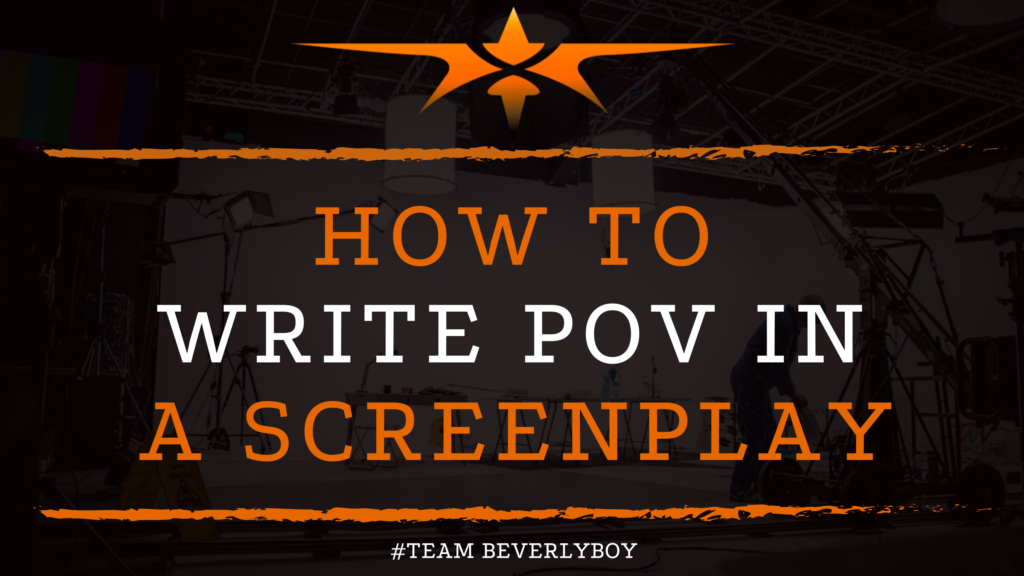How to Write POV in a Screenplay
In screenwriting, a POV (point of view) shot can be addressed in a variety of ways. Depending on the placement and context of the scene. Used to provide the audience insight into a particular character’s perspective on the action taking place in a scene. Learning how to write POV in a screenplay is all about perspective and planning. With a bit of careful thought, you can show the audience what a character sees. And provide insight as to how the character interprets the action. Using point of view in your screenplay.

You might be thinking! Screenplays are not supposed to outline any type of recommendations for the camera crew unless absolutely necessary. As this is a Director’s role.
But there are ways that you can write POV in a screenplay without crossing the line or stepping on any toes. Some advice on how to write POV in a screenplay follows.
POV IN SPEC SCRIPT
Generally, the point of view shot is going to be one of several that are part of a sequence of shots. If you’re writing a spec script, you’re going to format the POV shot into the spec script differently than you would if you were writing the initial screenplay.
Either way, if you’re trying to format your POV into the spec script as part of a sequence of shots? You’re going to first plan out your shot sequence. Which will likely be made up of three or more shots.
First, your character is going to look at something. Next, your character is going to be represented by the POV shot in which they see whatever is happening. And, after that, the primary action of the scene is likely to continue to unfold.
Consider this pattern as you’re trying to decide how to write your shot sequence into your spec script.
POV IN A SELLING SCRIPT
In short, you should not be attempting to figure out how to write a POV in a screenplay that represents your selling script. This isn’t your job, and could get you looked at as an amateur writer if you’re going to attempt it.
However, there are other ways that you can incorporate POV without actually writing the POV shot and stepping on the Director’s toes.
If you must include POV, and you’re writing a selling script, consider how you can use your words and your action lines to help the Director see that you intended a POV shot without actually addressing the point.
For instance, you might write the dialogue out as a daydream or as having come from a narrator. This will help the Director to see that you intended for the upcoming shot to be in the point of view of the character or the narrator of the story. They’ll know how to handle the shot planning from there.
YOU ALSO COULD DICTATE AS FOLLOWS:
INT. LIVING ROOM – NIGHT
CHARACTER’S P.O.V. – MOVING
By sneaking the POV into your secondary slugline you’re not technically telling the Director what shot to use. And offering for them to use whatever means of delivering the story that they see fit.
But you are telling the Director that the upcoming action is part of what the character sees in his or her point of view.
Finally, learning how to write POV in a screenplay is a process really of figuring out how and what is most appropriate for your phase of screenwriting. As well as what’s most suitable for your script at the time but there are many options available to you.

